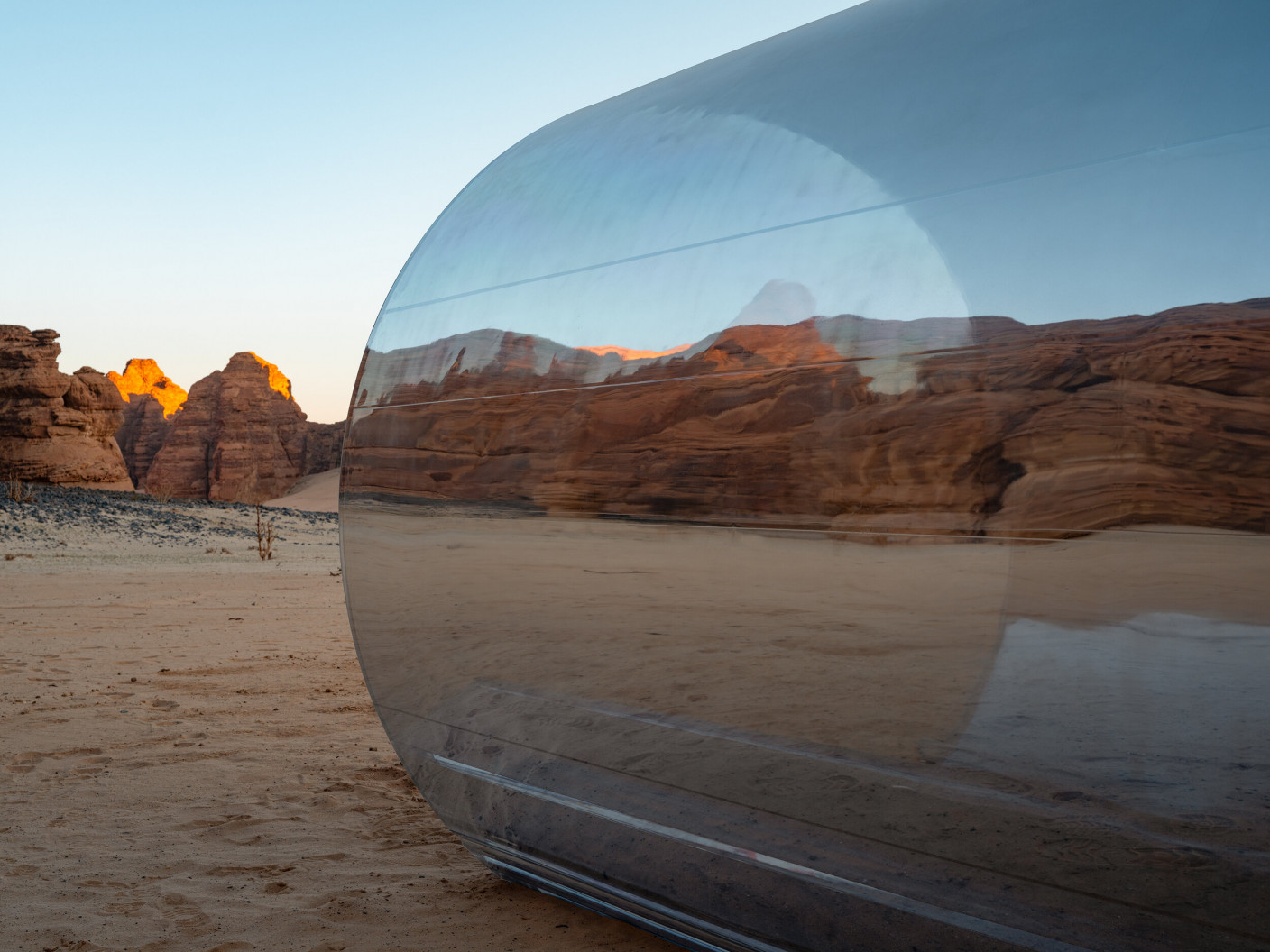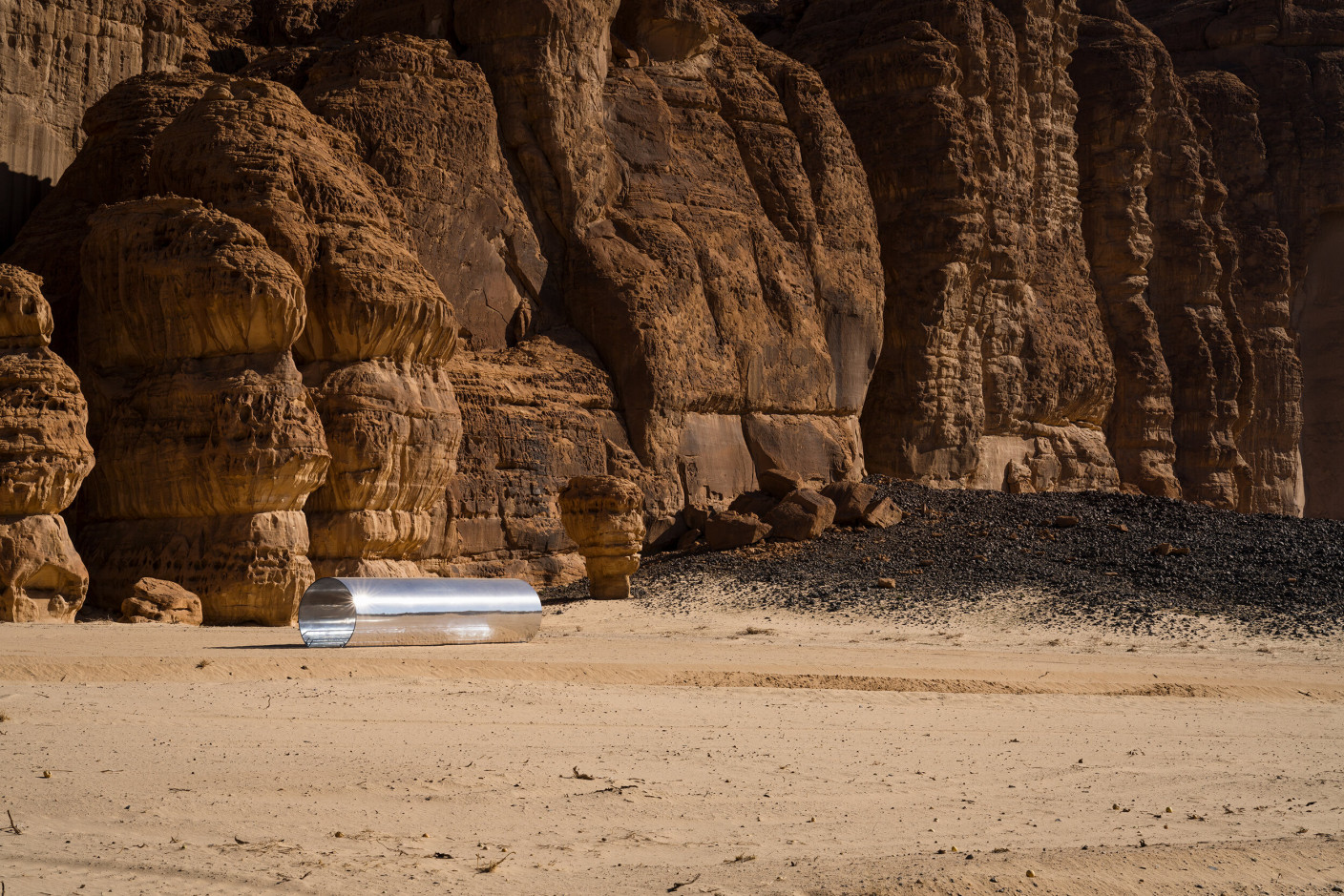Nasser Alsalem
Amma Qabl
Amid extraordinary megalithic structures, towering rock-carved facades that have stood statuesque-still for more than 5000 years, AlSalem’s structure is an elegantly simple gesture that spans past and present: a passage-way, its circumference shaped by calligraphic letter forms that read Amma Qabl (loosely meaning ‘what precedes’). The words, elongated to 9m, are architecturally transformed into a tunnel as they link one non-descript point in the desert to another, equally anonymous point. The short phrase structuring the passage has no entirely satisfactory equivalent in the English language – like the formal idiom it derives its meaning from: amma baad, (‘henceforth’ or ‘there-after’), it synthesizes time frames and pivots thought from one moment, one place, to the next.
The work appears as part of AlSalem’s “Amma Baad” series, named for an expression found solely in formal correspondence. Following initial salutations, while preceding – and perhaps anticipating – the main subject or story to follow, amma baad is a moment dense with expectations. The phrase implies deferral, a liminal time and space of pause between greeting and content.
The series articulates varied reflections on the exponential changes that are reshaping Saudi society, each piece a still point that unfurls a gesture through time and space – to what has been and towards what lies ahead. In the simple, as-yet-unrealized space announced by Amma Qabl, AlSalem telescopes the monumentality of historical time into the rapid convulsions of the present. After a long duration of stasis, the Kingdom now experiences a moment of tumultuous transformation; Vision 2030, a long-range strategic plan set to diversify the economy and reconfigure daily life. Saudis today exist in this space in-between, after what has come before, but still waiting with bated breath, for the impact of this vision.
Unlike the fixed specificity of ‘amma baad’, in Arabic, ‘amma qabl’ has no official register. Though it is not conventional phrasing, invoked here it suggests what has been – yet, that sense is entirely contingent on its sister phrase.
With Amma Qabl, AlSalem traverses from present to past, attention is directed towards the Nabataeans, finding there, in that ancient kingdom, the origins of the Arabic script. As such, the tunnel enacts a rite of passage, progressing from here to there expresses a state of transition between past and future identities. In the context of Saudi Arabia, this hypothetical space of pause is the collective anticipation of what might materialize from this restless, relentless change. The past and the future become entwined in a liminal moment, pregnant with potential. Tense interdependency enfolds ‘amma qabl’ within ‘amma baad’ – there could be no real linguistic sense for the former without the latter – and there could be no ‘amma baad’ – no present or the future it ushers us towards – without ‘amma qabl’ – all that has come before, including the linguistic foundations built by the Nabataeans.




